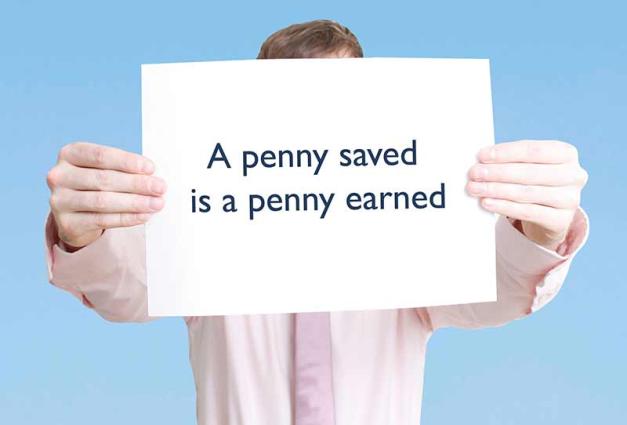You've heard the come-ons. Signs that your partner is cheating! Seven ways to master the hidden language of power! Experts reveal what Harry and Meghan's body language says about their marriage! Anywhere you go these days—in the popular press, on TikTok and Instagram and Facebook, on YouTube—you're told that people's subtle faces and body movements give them away.
Is there any truth to this?
The three of us combined have spent more than 100 years working in the field of Nonverbal Communication (NVC). It's a fascinating area, chock-full of interesting findings. Unfortunately, it's sometimes hard to tell the science from the pseudoscience, and often it's the pseudoscience that grabs more clicks. We felt it was time to set things straight.
There Really Isn't Such a Thing as "Body Language"
Can people's posture, gaze, touch, tone of voice, and faces tell you what they really think or feel? A whole industry pushes the idea that "you can see it in their body language," when "it" can be whether people love or hate us, or whether they're interested customers, innocent defendants, or international terrorists.
Are there any reliable cues? If there truly were a body language, it would operate like a language! In language, words have fairly precise meanings. "Lava" is molten rock spewed by volcanoes, and "eat" means putting food in our mouths. The words can also be assembled to state facts, like "Aardvarks are quadrupeds."
In NVC, though, things are different. Outside of gestures like OK signs and extended third fingers, there aren't the kinds of precise meanings we see in language. If you ask a friend about the weather outside and she scowls, her face may mean that: (a) it's lousy outside; (b) it's so lousy outside that it is ridiculous to ask; or (c) she's still upset from the argument yesterday and the last thing she wants to do is talk to you, especially about the weather. Which one is it? We could look for other nonverbal clues, but the kicker is that we usually have to use language—a real language—to be certain: "Hey, what's with the face?"
We Don't Have a Stable Personal Space
We get upset when others don't "give us our space." The idea that we have a stable, insulating personal space that we defend from invaders is appealing, but we defy it all the time! People allow friends closer than strangers and children closer than friends. With romantic partners, the preference is often no space at all. A close approach can be intimate in one context and sexual harassment in another. With your children you treasure closeness, but when they misbehave you're happy—temporarily!—to have them out of sight. And the boundaries set with others depend not only on distance, but on the gaze, body orientation, posture, and faces exhibited during the interaction.
Physical closeness doesn't imply emotional closeness though, and this is revealed by electronic media. What do you make of two people, sitting a few seats apart in a coffee shop, each on a video call with others halfway across the world? Who is closer to whom?
Our Faces Don't Read Out Our Inner Emotions
How about those posters on every preschool wall showing cartooney faces with words like "Happy," "Sad", "Angry" and "Scared" underneath? Certain faces, everybody's been taught, mean that the people making them are feeling specific emotions. But is that true? Of course not. It makes a difference whether a big smile comes from a child at a birthday party or a scammer after someone's money. A person who approaches you with a tearful pouty face to announce "My child has cancer" may make the same face the next week and say, "She doesn't have cancer after all!"
If faces don't generally express inner emotion, what do they do? If you ask someone, "How was the movie?" and he smiles, the smile is about the movie. Most of the time, faces are about things—things you know, things you want, things you want from others. The so-called "angry" face on the posters signals others to fess up or leave, the "sad" face gets support and hugs, the "scared" face says "I give up." And people in diverse societies make diverse faces, in ways very different from those preschool posters.
You Can't Tell When People Are Lying from Their Bodies or Their Faces
You know the phrase "The body never lies"? Well, that's a lie, but one reason people cling to it is because the truth about lies leaves them feeling so vulnerable. As NVC research has shown for decades, there are no telltale nonverbal signs of lying. Yes, people may fidget, blink more or less, avert their eyes, twitch their lips or noses, stammer, and make fleeting facial "microexpressions," but these are all signs of stress, not lying. People may be giving off these signs while they are lying but it's not because of it.
And you might think that guilty people would be more stressed than innocent ones, but often that's not true. An inveterate liar may be far less stressed about being accused yet again. Innocent people may suffer overwhelming stress not because they are lying, but because they fear being wrongly accused of it, resent the fact that they are suspected of it, or are simply fraught at being put on the spot about it.
Context and Culture Matter
So what does nonverbal behavior tell you? As we hope we've made clear, it depends. You can only make sense of people's nonverbal behavior when you understand who the interactants are, what setting they're in, what they're saying to each other, and what culture they're from. The stakes are high—in relationships, in the boardroom and courtroom, in international affairs—when people cave to the simplistic pseudoscience on "body language."
Who said this was going to be easy?
For Further Reading
Patterson, M. L., Fridlund, A. J., & Crivelli, C. (2023). Four misconceptions about nonverbal communication. Perspectives on Psychological Science. https://doi.org/10.1177/17456916221148142
Alan J. Fridlund is Associate Professor of Psychological and Brain Sciences at University of California, Santa Barbara. He studies the evolution and functions of facial displays.
Miles L. Patterson is Professor Emeritus of Psychological Sciences at University of Missouri, St. Louis. His research concerns the interplay of nonverbal behaviors in social interaction.
Carlos Crivelli is Associate Professor/Reader in Affective Science and Social Interaction at De Montfort University, Leicester, U.K. He investigates facial displays and other nonverbal signals across diverse indigenous societies.




